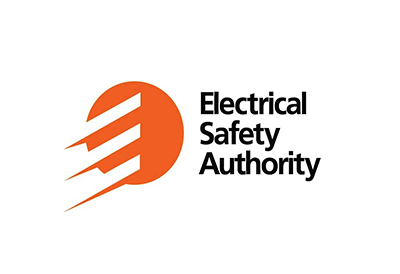Electrical Industry Take Note: 27th Edition of the Ontario Electrical Safety Code Effective May 16, 2019

May 16, 2019
The latest edition of the Ontario Electrical Safety Code (OESC) – the legal standard with which all electrical work in Ontario must comply – comes into effect May 16, and includes important new safety requirements. Electrical work conducted on notifications (or plan review submittals) taken out after today must meet the updated requirements.
The new edition of the OESC includes the Canadian Electrical Code, Part I plus several Ontario-specific amendments. This new edition includes changes designed to enhance electrical safety and protect workers and the public including:
- Re-write of Section 10 requirements for bonding and grounding have been reorganized and reduced in size with some changes that will improve safety and simplify the installations;
- Expanding the use of Tamper-resistant receptacles in educational facilities and hotels/motels;
- Requirements for installing an identified (neutral) conductor at each control (switch) location of permanently installed luminaire;
- Alignment with the Ontario Building Code to prevent the installation of high-voltage conductors over buildings;
- Providing of adequate working space for electrical workers to undertake necessary repairs, maintenance and installation of transformers greater than 50kVA;
- Prohibiting of installation of cables in concealed locations in corrugated roof decking
- Adding requirements for Energy Storage systems; and
- Facilitating the use of Power over Ethernet to provide a pathway for sources of electricity.
“Revisions to the Ontario Electrical Safety Code are made through a broad consultative process at both the provincial and national levels, and through the collaboration of ESA and its safety partners. The updated Code harmonizes the Ontario requirements with the rest of Canada,” says Nansy Hanna, Director of Engineering and Program Development, Regulatory and Safety Programs, Electrical Safety Authority.
In addition to prescriptive amendments and rules regarding instructions for safe electrical installations, the OESC also contains requirements regarding notifications. Specifically, almost all electrical work requires a notification. In Ontario, only a Licensed Electrical Contractor is legally allowed to be hired for electrical work, and only homeowners or occupants are able to conduct electrical work in their own home.
And although homeowners and occupants are legally allowed to do electrical work in their own home, ESA strongly encourages hiring a Licensed Electrical Contractor – and it’s important to ensure the required electrical notification are being taken out. A notification creates a permanent record of the electrical work and triggers a review of the work by ESA. Once the electrical work is complete, it is imperative to ask for an ESA Certificate of Inspection for resale and insurance purposes, as well as peace of mind.
To learn more about Ontario’s legal requirements for electrical installations, for frequently asked questions about the Ontario Electrical Safety Code, or to purchase a copy, visit www.esasafe.com/2018oesc.
















